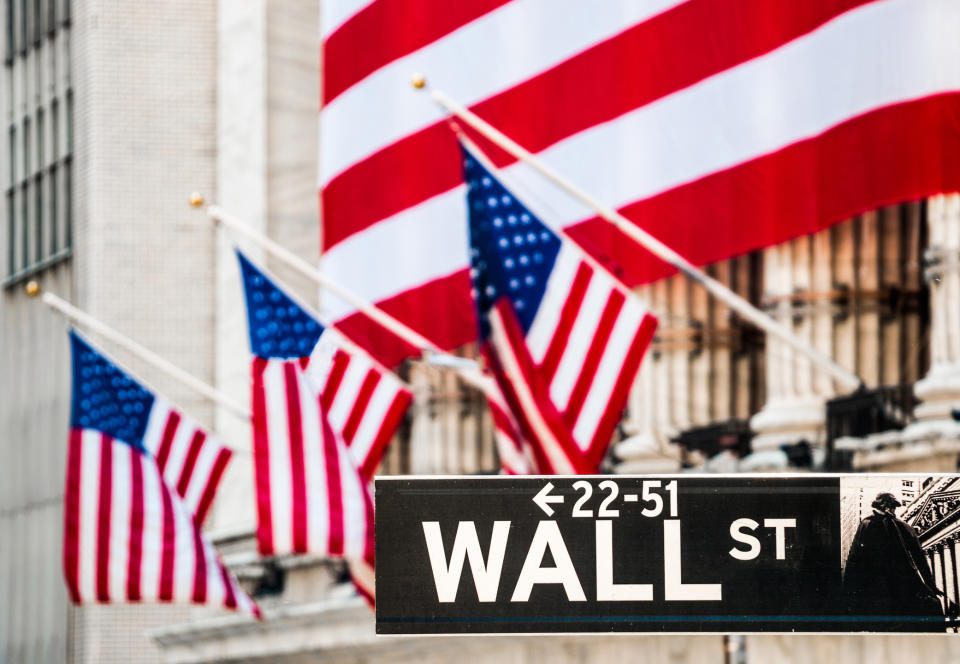2 Marijuana Stocks That Could Be Added to the S&P 500
Marijuana stocks have been pretty much unstoppable since the beginning of 2016, and even more so since the beginning of 2019. In the first quarter, more than a dozen pot stocks logged gains of at least 73%, with the very first cannabis exchange-traded fund, the Horizons Marijuana Life Sciences ETF, gaining 54% during the first quarter.
The legalization of recreational marijuana in Canada has helped validate an industry that's long been considered taboo. Legitimacy has been further established as there are now nine pot stocks listed on either the Nasdaq or the New York Stock Exchange (NYSE).
Two cannabis stocks, Innovative Industrial Properties and Tilray, went the initial public offering route in December 2016 and July 2018, respectively. Meanwhile, seven other companies have uplisted from the over-the-counter (OTC) exchange to either the Nasdaq or NYSE. In doing so, these marijuana stocks have improved their volume-based liquidity, encouraged coverage from Wall Street investment banks, and listed themselves side by side with time-tested companies.

Image source: Getty Images.
S&P 500 listing criteria eliminates all but two marijuana stocks
But one thing no marijuana stock has done is gain a listing in perhaps the most prestigious of all indexes: the broad-based S&P 500 (SNPINDEX: ^GSPC). Sure, the Dow Jones Industrial Average may have a lot more history behind it than the S&P 500, but as a roughly 500 company, market-cap-weighted index, the S&P 500 is viewed by Wall Street and investors as the United States' investment benchmark. Being added to the S&P 500 would be the ultimate victory for marijuana stocks.
Of course, gaining entry into the S&P 500 won't be easy. There are eight criteria that an S&P 500 committee takes into account when selecting new companies to enter the index. These criteria sometimes have multiple subcategories that must be met for inclusion. In no particular order, the committee will examine a company's market capitalization, domicile, liquidity, public float, financial viability, sector classification, stock exchange listing, and length of time publicly traded.
For example, in order to be listed in the S&P 500, a company would need to have a market cap of more than $8.2 billion, boast an annual dollar-value traded to float-adjusted market capitalization of greater than 1, and have a minimum monthly trading volume of at least 250,000 shares over the six-month period leading up to the committee's evaluation date. The committee also excludes companies that are listed on the OTC exchange, master-limited partnerships, exchange-traded funds, preferred stock, royalty trusts, and ADRs.
Suffice it to say, almost the entire marijuana industry wouldn't pass this rigorous test.
However, there are two pot stocks that at least have a chance to be added in the not-so-distant future.

Image source: Getty Images.
Canopy Growth
The marijuana stock with the most logical pedigree for addition to the S&P 500 is Canopy Growth (NYSE: CGC), a company with a $14.4 billion market cap that's been averaging close to 9.3 million shares a day in trading volume over the past three months and has been listed on the NYSE for close to 11 months.
Canopy Growth looks to be well on its way to 1 billion Canadian dollars in sales by 2021, with an outside chance of it happening next year. It also has approximately $3.7 billion in cash and cash equivalents in its coffers, thanks to the closing of a $4 billion equity investment from Modelo and Corona beer producer Constellation Brands in November. This means Canopy Growth more than satisfies concerns about market cap, liquidity, and financial viability, and there's no pure-play cannabis representation in the S&P 500, so sector classification would seemingly make sense.
Furthermore, don't forget that Canopy was awarded a hemp production and processing license in New York State in mid-January. This firmly moves the company into the U.S. market.
Then again, there are possible reasons Canopy Growth may not make the cut. For instance, even with just over 500 securities listed in the S&P 500 (a few companies have multiple classes of stock), fewer than 20 are headquartered in overseas markets. While foreign stocks aren't excluded from the S&P 500, they have to be pretty important to the U.S. economy to be considered for inclusion. Having only hemp operations in the U.S. may not be enough to sway the committee.
Canopy has also only been trading on a major exchange for less than 11 months. Sure, it's been around for years, but that may not be enough to satisfy the "length of time as a public company" metric that the committee pays attention to.
No pot stock has a better shot at being in the S&P 500, but that's no guarantee that Canopy Growth gets the call anytime soon.

Image source: Getty Images.
Aurora Cannabis
Based on market cap, liquidity, and major exchange listing requirements, the only other pot stock that even has a shot at inclusion in the S&P 500 is Aurora Cannabis (NYSE: ACB). Aurora ended this past Tuesday, April 9, with a market cap of $9 billion and an average daily trading volume of well over 32 million shares on the NYSE over the last three months. Of course, its market cap only recently ascended above the $8.2 billion cutoff.
Like Canopy Growth, Aurora Cannabis checks off a number of important boxes. It's expected to be the leading producer of marijuana in Canada at peak production and currently sits behind only Canopy Growth among growers in terms of quarterly revenue generation. The company also has more than 1 billion shares outstanding, so there'd be no concern about low float-induced manipulation by short-term traders.
However, this is also a company with no true footprint in the United States. It does plan to enter the hemp market to get its foot in the door, but as of now, the company isn't generating any revenue from the United States. That's a problem for a committee that's aiming to create a representative index of the U.S. economy.
Aurora Cannabis also has less time than Canopy on a major exchange. It only uplisted to the NYSE about 6.5 months ago.
Further, Aurora Cannabis had less than $400 million in cash and cash equivalents when it reported its second-quarter operating results in February. Considering that Aurora is losing quite a bit of money on an operating basis, it may not meet the criteria of financial viability.
Long story short, it's a much longer shot than Canopy Growth for inclusion into the S&P 500, but it's not out of the question.
More From The Motley Fool
Sean Williams has no position in any of the stocks mentioned. The Motley Fool recommends Constellation Brands and Innovative Industrial Properties. The Motley Fool has a disclosure policy.

 Yahoo Finance
Yahoo Finance 